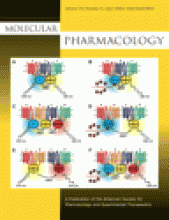Abstract
Cellular Ca2+ signaling underlies diverse vital biological processes, including muscle contractility, memory encoding, fertilization, cell survival, and cell death. Despite extensive studies, the fundamental control mechanisms that regulate intracellular Ca2+ movement remain enigmatic. We have found recently that activation of the (Na++K+)-ATPase markedly potentiates intracellular Ca2+ transients and contractility of rat heart cells. Little is known about the pathway responsible for the activation of the (Na++K+)-ATPase-initiated Ca2+ signaling. Here, we demonstrate a novel mechanism in which activation of the (Na++K+)-ATPase is coupled to increased L-type Ca2+ channel function through a signaling cascade involving Src and ERK1/2 but not well established regulators of the channel, such as adrenergic receptor system or activation of PKA or CaMKII. We have also identified Ser1928, a phosphorylation site for the α1 subunit of the L-type Ca2+ channel that may participate in the activation of the (Na++K+)-ATPase-mediated Ca2+ signaling. The findings reported here uncover a novel molecular cross-talk between activation of the (Na++K+)-ATPase and L-type Ca2+ channel and provide new insights into Ca2+ signaling mechanisms for deeper understanding of the nature of cellular Ca2+ handling in heart.
Footnotes
-
This work was supported in part by the National Institutes of Health National Heart, Lung, and Blood Institute [Grant HL52175]; by the National Institutes of Health National Institute of Arthritis and Musculoskeletal and Skin Diseases [Grant AR44197]; by the Intramural Research program of the National Institutes of Health National Institute on Aging; and by a seed grant from Johnson & Johnson.
-
D.I.L. and M.G.K. contributed equally to this work.
-
ABBREVIATIONS: NKA, (Na++K+)-ATPase or sodium and potassium ion activated adenosinetriphosphatase (EC 3.6.1.3); NCX, Na+/Ca2+ exchanger; PP1, 4-amino-5-(4-methylphenyl)-7-(t-butyl)pyrazolo[3,4-d]pyrimidine; N-[2-(4-bromocinnamylamino)ethyl]-5-isoquinoline; LTCC, L-type Ca2+ channels; BAPTA, 1,2-bis(2-aminophenoxy)ethane-N,N,N′,N′-tetraacetic acid; PD98059, 2′-amino-3′-methoxyflavone; AR, adrenergic receptor; PKA, protein kinase A; CaM, Ca2+/calmodulin; CaMKII, Ca2+/calmodulin-dependent protein kinase II; CICR, Ca2+ induced Ca2+ release mechanism; PKC, protein kinase C; SSA412, site-specific antibody 412.
- Received October 8, 2008.
- Accepted January 2, 2009.
- U.S. Government work not protected by U.S. copyright
MolPharm articles become freely available 12 months after publication, and remain freely available for 5 years.Non-open access articles that fall outside this five year window are available only to institutional subscribers and current ASPET members, or through the article purchase feature at the bottom of the page.
|






